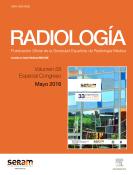0 - Hemorragia subaracnoidea
School of Medicine University of North Carolina at Chapel Hill, Estados Unidos.
Objetivos docentes: 1. Review the classifications of SAH. 2. How does blood get into the SA space and what happens once it gets there? 3. How do we make the diagnosis of SAH? 4. Review new facts regarding SAH.
Discusión: The most common used clinical classification is the Hunt & Hess (1968) followed by the imaging based Fisher (1980) classification. Factors leading to aneurysm rupture include intraluminal flow dynamics, wall biology and genetics, and the peri-aneurysm environment. Wall inflammation and angiogenesis, and different gene expression in the neck and dome are factors contributing to rupture. In trauma, SAH is secondary to rupture blood vessels or venous thrombosis. Trauma is the most common cause of adult diffuse and convexity SAH but other common causes are amyloidosis (which affects superficial penetrating arteries), coagulopathies and venous thrombosis should be considered in the latter. Amyloid deposits lead to progressive arterial wall delamination leading to weakness and subsequent rupture. Other causes to be discussed are PRES, vasculitis, vascular malformations, tumors and dissections. Perimesencephalic SAH is special as it is benign and usually no underlying lesions are found. The initial evaluation of perimesencephalic SAH can be done with DSA or CTA. The diagnosis of SAH can be clinically confusing but both CT and MRI have nearly 100% sensitivity for its detection and the combination of CT and CTA is more specific/sensitive than a lumbar puncture. MR FLAIR and SWI are highly sensitive for SAH especially after the initial 72 hours. SAH continues to have a poor prognosis with 50% of patients dying in the first 30 days and following aneurysmal SAH 70% develop vasospasm during the first 3-12 days. Response to SAH may be genetic and post SAH personality changes are common. SAH is more common in Japan and Finland and in women especially those who smoke, consume alcohol, and are hypertensive and obese. Although there is no seasonal preference in the Southern hemisphere, in the Northern world they are common during winter and spring.






 Cartas de presentación
Cartas de presentación

